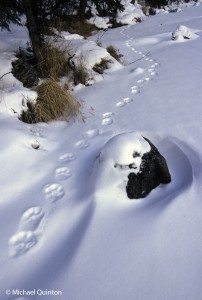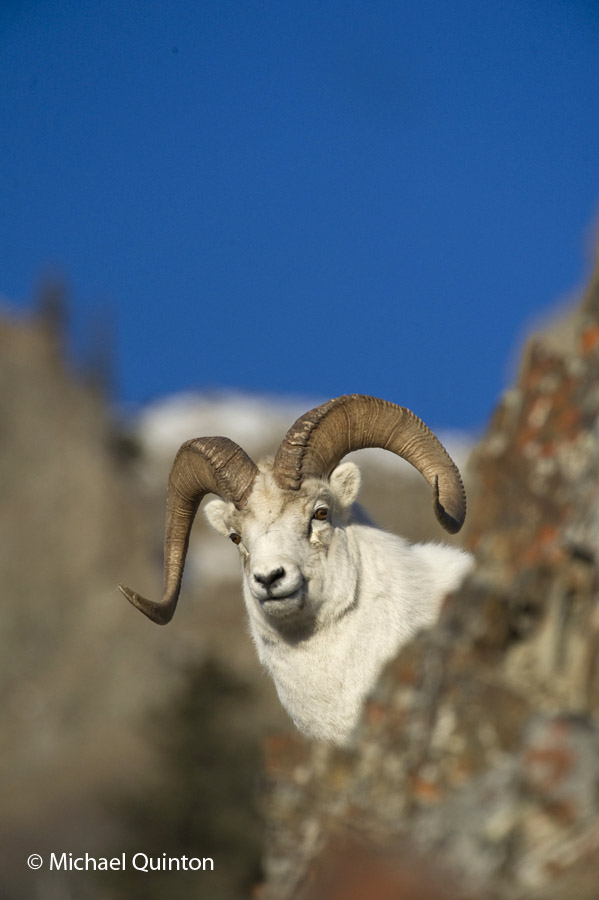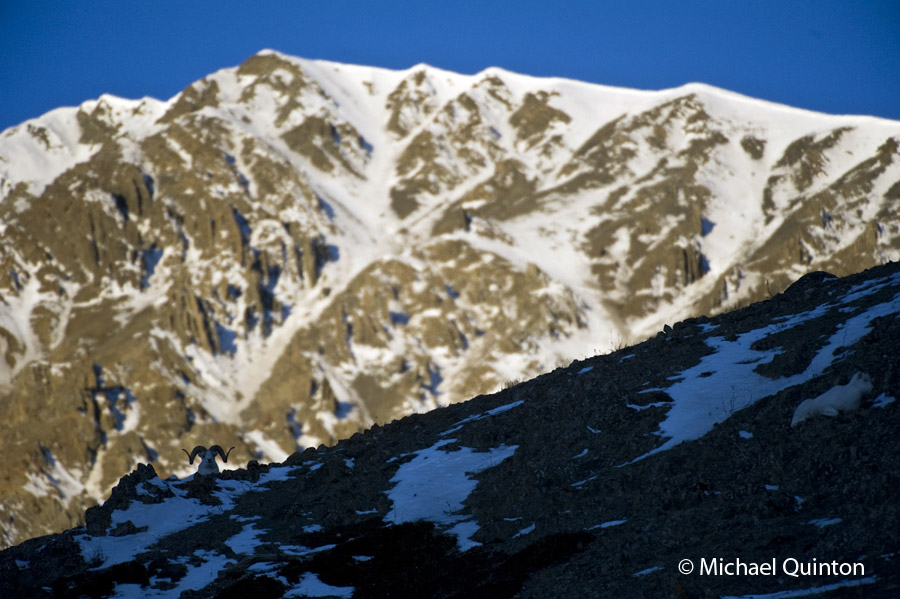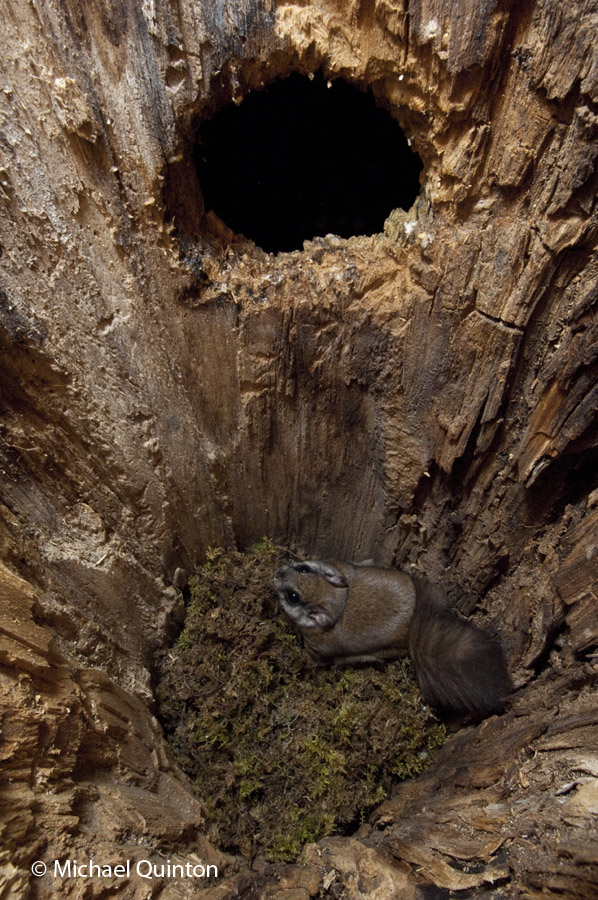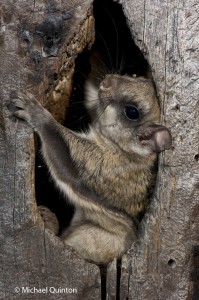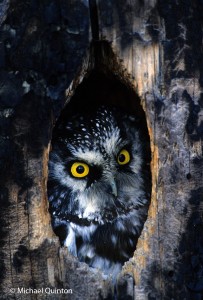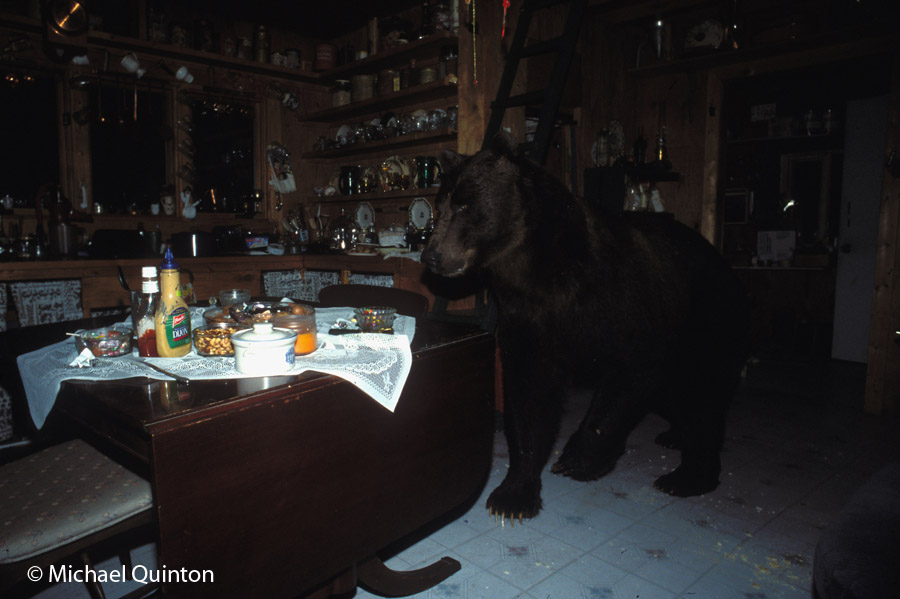Twenty years ago, coyotes were one of my favorite photo subjects. This extremely adaptable species was both deadly hunter and scavenger. Nothing it seemed, was too large or too insignificant, too old or too new, to be left off the coyotes menu. Whether it was big game or game birds, domestic sheep or farm-yard chickens, coyotes made few friends. I guess I was one of just a few. The sheer variety of behavior they would engaged in, made each and every encounter a new and exciting adventure.
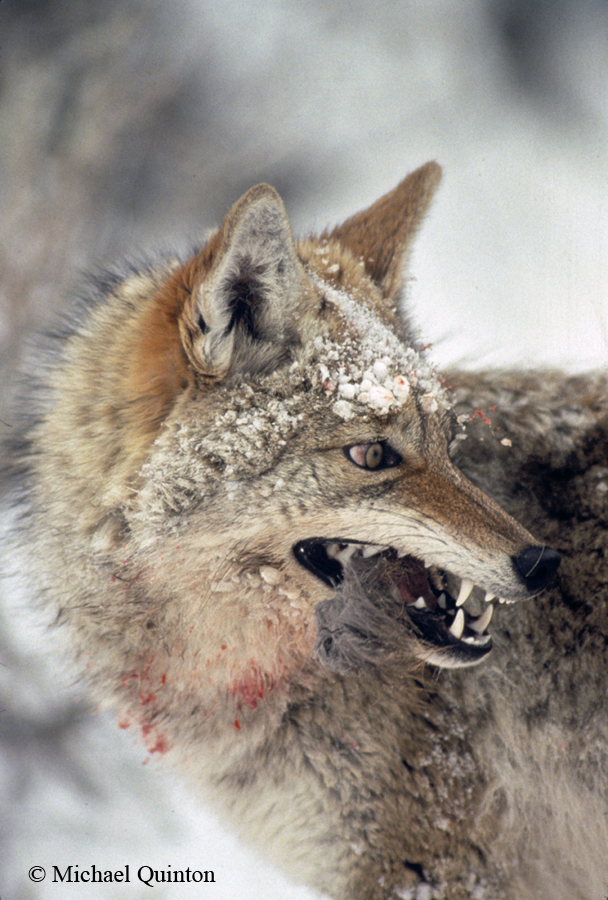 Coyote feeds on an elk in Wyoming. Tracks and blood in the snow told the story. Coyotes had harassed a cow and her big calf through the night. By morning at least thirteen coyotes had assembled and were finally able to bring down the large calf. Twelve hours later there was only a large trampled area of blood and hair remaining. Continue reading →
Coyote feeds on an elk in Wyoming. Tracks and blood in the snow told the story. Coyotes had harassed a cow and her big calf through the night. By morning at least thirteen coyotes had assembled and were finally able to bring down the large calf. Twelve hours later there was only a large trampled area of blood and hair remaining. Continue reading →
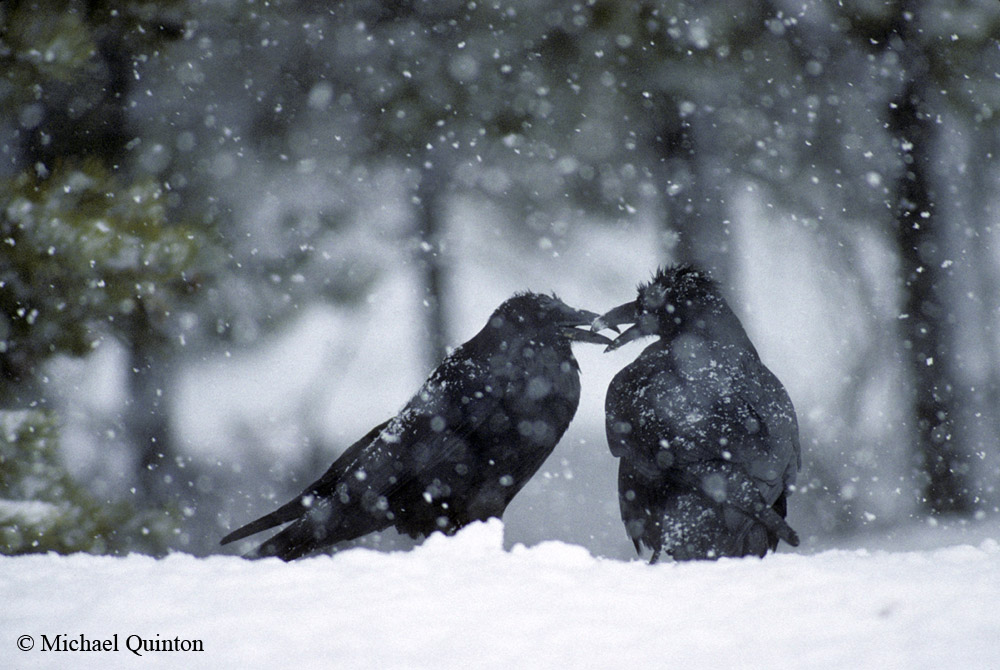 Raven pair get acquainted during a snowstorm.
Raven pair get acquainted during a snowstorm.

